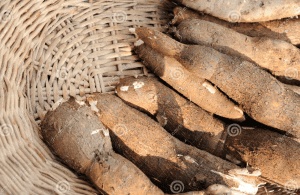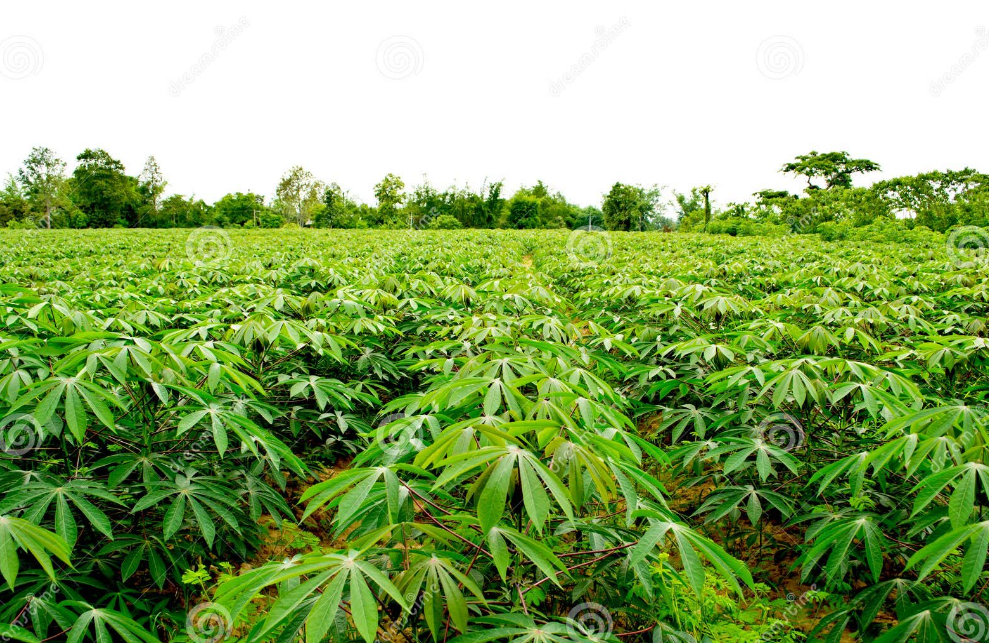Origin Of Cassava
Cassava (Manihot esculenta) is an annual crop cultivated mainly in tropical and subtropical regions. It is a woody shrub plant and one of the major sources of carbohydrates. Cassava is a tuberous root plant consumed mostly in its boiled form.
Cassava is common to Nigerians in West Africa. It can be processed into garri (cassava granules), Brazilian Farinha, or fufu (Akpu). These proceeds are done by grating cassava roots, pressing the moisture, and finally drying, frying, or roasting. Extracted cassava starch, also called tapioca, is also used for animal feed and industrial purposes.
Cassava is the third-largest carbohydrate source in the tropics after rice and maize. It is a staple food in the developing world and has provided essential diets for over half a million people. It can grow on marginal soils and can survive drought. Thailand is the world’s largest exporter of cassava starch, while Nigeria is the largest producer of cassava.
Preferred Botanical Name: Manihot Esculenta
Preferred Common Name: Cassava
Local Common Name:
- Ibibio: Iwa
- Yoruba: Gbaguda
- Igbo: Akpu
Nutrient Composition Of Cassava
The following nutrients are found in 100 grams of raw cassava:
- Calories 160
- Total Carbohydrates 38g
- Total Fat 0.3g
- Total Protein 1.4
Medicinal Properties and Uses Of Cassava
- Very rich in dietary fiber which makes one feel full for a long time.
- Vitamin B2 and riboflavin in roots are beneficial for curing headaches and migraines.
- Cassava helps treat diarrhea because of its antioxidant content, which helps overcome flaccid stools.
- Cassava helps to improve vision due to its vitamin content.
- Can help prevent wounds from being infected and speeds up healing.
- they are an energy-giving food that gives energy to the body.
How To Grow Cassava
Yield Information
Cassava takes about 7-12 months to grow to full maturity, depending on the variety. On average, a hectare of cassava can yield 10.6 tonnes of tuberous roots.
Nursery and Transplant Requirements Of Cassava
Propagation is by planting a stem segment directly on the field. Cut stems into 9-30 cm lengths, be sure to include at least one node. Bury a stem segment vertically within 8-15cm in the ground. Water frequently at the first stage, but do not overwater.
Soil and Sun Requirements Of Cassava
Frequent rainfall and freezing temperatures are not suitable for growing cassava. Well-drained soil, light sandy loams or loamy sands, and modest rainfall are the suitable conditions for growing cassava. Cassava grows best on fertile and moist soil.
they can also grow on different soil types, provided it is pulverized.
Watering Requirements Of Cassava
In the first 3-4 months of planting, cassava requires sufficient water. A soil with high water holding capacity will be best suitable for planting cassava as cassava is a root plant that requires moist soil for optimum yield. However, avoid saturated soils.
During the first 3-4 months of planting, a lack of water supply will result in improper plant growth, leading to lower yield. Average annual rainfall of 400mm is sufficient for the cassava’s growth.
Planting and Spacing Requirements Of Requirements
For a hectare, 60 bundles of their stem are the recommended quantity, and stem cuttings at 25cm long. The space requirement is 1m x 1m. The selection of healthy, pest-free cuttings is essential. Stems can be planted by hand or by planting machine.
Vertical planting, Planting flat below the soil surface, and tilted planting are the three ways to hand plant cassava cuttings. In higher rainfall areas, flat-planted cuttings may rot, while cuttings planted vertically will quickly dry up under fewer rainfall situations. Generally, the recommended planting style is flat planting 5-10 cm below the soil surface.
Harvesting Of Cassava
There are varieties that mature early are ready for harvest at 7 months, while after 12 months of planting, late-maturing cassava will be ready for harvest. Ready to harvest cassava will have yellow leaves and eventually fall, then the roots will mature.
The hand harvesting is done by first cutting the leaves and the upper part of the stem. The cuttings should be kept in a safe location for the next planting. Lift the plant’s lower part, pull the roots out of the ground, then cut off the tubers from the stem.
In machine harvesting, the machine grabs onto the stem of the plants and lifts the roots from the ground. Care is taken while harvesting to reduce damage to the roots and preserve the shelf life.
Storage Of Cassava
Deterioration of the roots can occur within 48 hours of harvesting due to enzymatic changes in the root. Then it will rot and decay. Refrigerating roots or storing them in the ground if they are still attached to the plant will preserve the roots for more extended periods.
Disease and Pest Of Cassava
Anthracnose
This causes cankers on stems and petioles, leaves wilt, and die off. It is a fungi disease and can be avoided by planting canker-free cuttings.
Brown Leaf Spot
It is a fungi disease that causes irregular brown spots on leaf veins, yellowing, and leaves dropping. Managing cassava brown leaf spots is by removing crop debris from around plants.
Cassava Brown Streak Disease
Necrosis of tubers, roots develop knots, yellowing along veins, and a chlorotic vein in leaves. It is a virus-caused disease. It is managed by planting healthy cuttings and removing and destroying affected plants.
Cassava Bacterial Blight
Caused by bacteria, the plant will have water-soaked lesions, leaf blade turns brown, and shoots die back. Controlling cassava bacterial blight is by practicing crop rotation and removing crop debris after harvest.
Cassava Mite
Prevention of the mite is by planting resistant cuttings, using natural enemies of mites.
Conclusion
Their significance is undeniable on a global scale, especially in tropical regions as a staple food crop. What sets cassava apart is its ability to thrive in various climates and soil types, making it an essential source of carbohydrates that sustains millions of individuals. As a rich source of calories and key nutrients, it plays a crucial role in ensuring food security, particularly in developing nations.
They are not just another nutritious food, but a vital source of income for farmers and a valuable raw material for multiple industries. From starch, biofuel, to animal feed production, cassava’s multifaceted uses contribute greatly to economic growth. Its durability and adaptability not only make it a vital resource for ensuring food security, but also for promoting stable economies.

